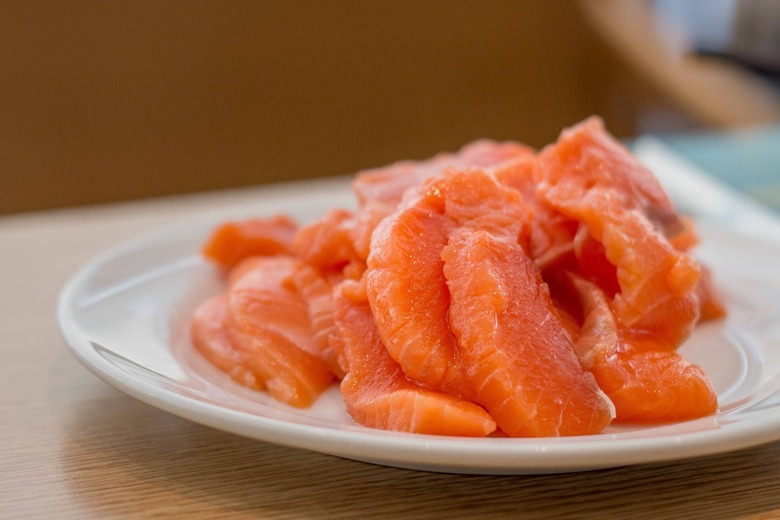Salmon Infected With Tapeworm Are Caught In The United States
In yet another warning against consuming raw or undercooked fish, a Japanese tapeworm that can grow up to 30 feet long, known as Diphyllobothrium nihonkaiense, has been found in salmon caught in American waters. A new study in the Centers for Disease Control's Emerging Infectious Diseases journal has identified the parasite as "posing potential dangers for persons who eat these fish raw."
Although it is usually confined to Asia's Pacific coasts, the worm's larvae were found in 64 individual wild Alaskan salmon in 2013, according to USA Today, but the study was only published last week. Four species are known to carry the parasite: chum salmon, masu salmon, pink salmon, and sockeye salmon. However, according to the authors of the study, the fish that were studied were not commercially harvested, which is not indicative of commercially-bought and consumed salmon.
The authors of the study claim that the study should not be used for food safety guidelines:
Although the health effects are generally not serious, tapeworm could easily spread via exported seafood goods, potentially infecting consumers in mainland United States, Europe, and Asia. Symptoms in humans include nausea, diarrhea, loss of appetite, fatigue, weight loss, and vitamin deficiency. Freezing or cooking the fish will get rid of the tapeworm.
